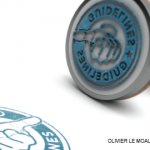Carter Thorne, MD, FRCPC, FACP, assistant professor at the University of Toronto and consultant and medical director of the Arthritis Program at Southlake Regional Health Centre, Newmarket, Ontario, Canada. Dr. Thorne says the challenge continues to encourage more walking, despite his busy schedule. During the Annual Meeting, Dr. Thorne planned for his hotel to be a walkable distance from the convention center, which helped him get his steps in. He even found a colleague who was also keen to walk in the challenge.
Sarah Tansley, MBChB, an academic clinical lecturer at the Royal National Hospital for Rheumatic Diseases in Bath, U.K. Dr. Tansley also enjoyed the step challenge. “It encouraged me not to use the conference bus, but to walk and experience the beautiful city of Chicago,” she says.
Walking the Talk
The Walking Challenge was created to inspire rheumatology specialists, allowing them to focus on the same physical fitness goals encouraged to help rheumatology patients stay active and healthy.
The ACR guidelines suggest people with arthritis who exercise regularly have less pain, more energy, improved sleep and better day-to-day function.1 Low-intensity exercises, such as walking, can improve heart, lung and muscle function and are beneficial for such diseases as osteoarthritis of the hip and knee.
The updated Physical Activity Guidelines for Americans, 2nd edition , indicate large health benefits can be achieved from short-duration physical activity of less than 10 minutes, such as reduced risks for disease and disability.2 The guidelines state new evidence points to specific health benefits of physical activity, including:
- Improved cognitive function, reduced anxiety and depression risk, and improved sleep and quality of life;
- Reduced risk of fall-related injuries for older adults; and
- Reduced risk of all-cause and disease-specific mortality, improved function and improved quality of life for people with chronic medical conditions.
The authors also write that approximately 80% of U.S. adults are insufficiently active—motivation for healthcare professionals and patients alike to get moving.
Carina Stanton is a freelance science journalist based in Denver.
References
- ACR Communications and Marketing Committee. Exercise and arthritis. American College of Rheumatology. 2018 Jun.
- Piercy KL, Troiano RP, Ballard RM, et al. The physical activity guidelines for Americans. JAMA. 2018 Nov 20;320(19):2020–2028.
